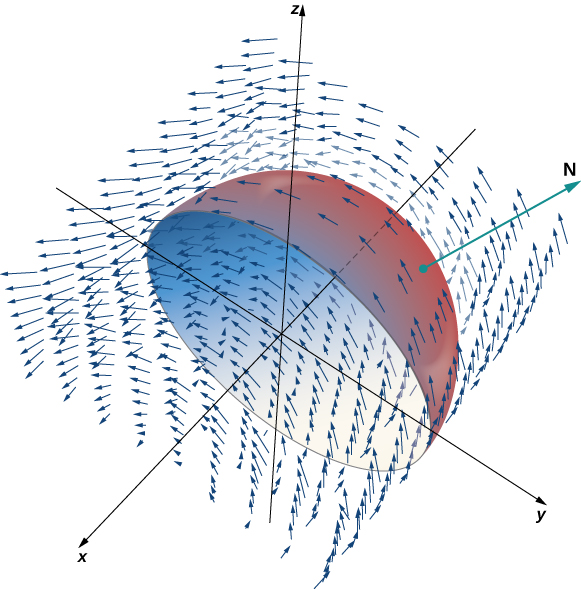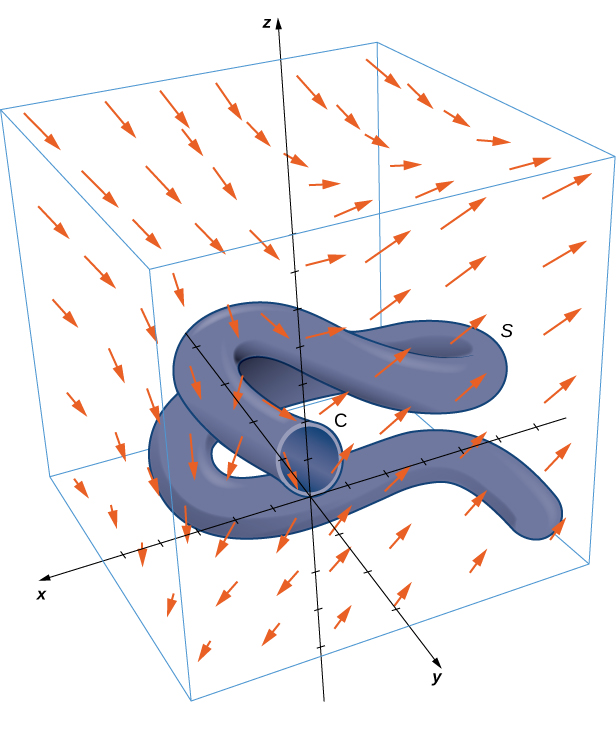| << Chapter < Page | Chapter >> Page > |
By Clairaut’s theorem, Therefore, four of the terms disappear from this double integral, and we are left with
which equals
□
We have shown that Stokes’ theorem is true in the case of a function with a domain that is a simply connected region of finite area. We can quickly confirm this theorem for another important case: when vector field F is conservative. If F is conservative, the curl of F is zero, so Since the boundary of S is a closed curve, is also zero.
Verify that Stokes’ theorem is true for vector field and surface S , where S is the hemisphere, oriented outward, with parameterization
as shown in the following figure.

Let C be the boundary of S. Note that C is a circle of radius 1, centered at the origin, sitting in plane This circle has parameterization By [link] ,
By [link] ,
Therefore, we have verified Stokes’ theorem for this example.
Verify that Stokes’ theorem is true for vector field and surface S , where S is the upwardly oriented portion of the graph of over a triangle in the xy -plane with vertices and
Both integrals give
Stokes’ theorem translates between the flux integral of surface S to a line integral around the boundary of S . Therefore, the theorem allows us to compute surface integrals or line integrals that would ordinarily be quite difficult by translating the line integral into a surface integral or vice versa. We now study some examples of each kind of translation.
Calculate surface integral where S is the surface, oriented outward, in [link] and

Note that to calculate without using Stokes’ theorem, we would need to use [link] . Use of this equation requires a parameterization of S . Surface S is complicated enough that it would be extremely difficult to find a parameterization. Therefore, the methods we have learned in previous sections are not useful for this problem. Instead, we use Stokes’ theorem, noting that the boundary C of the surface is merely a single circle with radius 1.
The curl of F is By Stokes’ theorem,
where C has parameterization By [link] ,

Notification Switch
Would you like to follow the 'Calculus volume 3' conversation and receive update notifications?